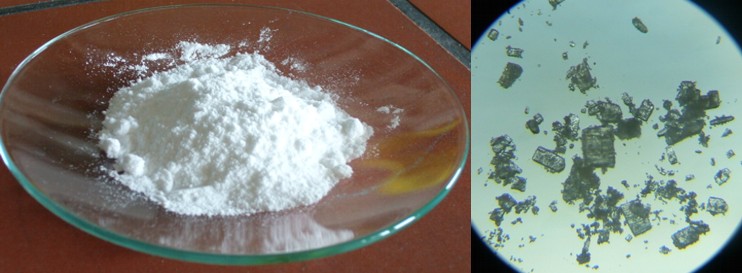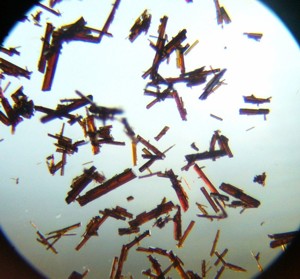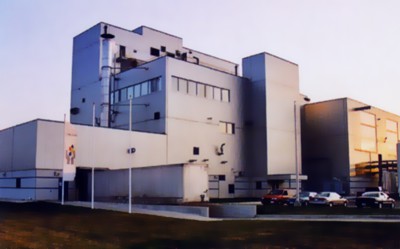  2. The History of Cyclodextrins 2. The History of Cyclodextrins |
 |
| The history of cyclodextrins can be divided into three periods, which reflect the different stages in the development of cyclodextrins research. After their discovery, basic research was carried out from 1891 to 1935, with the molecular structure of cyclodextrins remaining undiscovered for several decades. The discovery in 1936 that they had a cyclic structure composed of glucose units ushered in the next period of research, during which they were systematically studied. Much time was also devoted to researching cyclodextrin complexes. Towards the end of the 1960s, the production of cyclodextrins in particular had been so thoroughly researched that industrial production could begin. The third period, which is still ongoing, is characterized by the evolution of cyclodextrins from expensive fine chemicals to industrial-scale products and by the use of cyclodextrins in a wide range of applications. |
 |
| Discovery of Cyclodextrins |
 |
| A substance which subsequently turned out to be a cyclodextrin was first mentioned by A. Villiers in 1891. From 1 kg of starch, he obtained 3 g of a crystalline substance by treating the starch with Bacillus amylobacter. Scientists today are convinced that this bacterial strain must have been contaminated with Bacillus macerans, since this latter bacterial strain produces the enzyme cyclodextrin glycosyl transferase, which is required for the formation of cyclodextrins. |
 |
| Fig. 1.12: A. Villiers obtained a colorless substance during starch degradation, whose crystal form can be identified easily under the microscope (x4 magnification) |
 |
  A. Villiers called the substance “cellulosine”, because, like cellulose, it is reasonably resistant to acid hydrolysis and has no reducing properties. The microbiologist F. Schardinger also obtained a product closely resembling that of A. Villiers when he was investigating the enzymatic degradation of starch. He managed to isolate the bacterial strain which catalyses the formation of cyclodextrin from starch and which he called Bacillus macerans. By observing that this new starch degradation product formed two characteristic adducts with iodine, which differed in both crystal form and color, he concluded that two new substances had been produced during enzymatic degradation. Based on their origins, these new substances were called α-dextrin and β-dextrin. Both the empirical formula and the molecular structure remained unknown to the discoverers A. Villiers and F. Schardinger. A. Villiers called the substance “cellulosine”, because, like cellulose, it is reasonably resistant to acid hydrolysis and has no reducing properties. The microbiologist F. Schardinger also obtained a product closely resembling that of A. Villiers when he was investigating the enzymatic degradation of starch. He managed to isolate the bacterial strain which catalyses the formation of cyclodextrin from starch and which he called Bacillus macerans. By observing that this new starch degradation product formed two characteristic adducts with iodine, which differed in both crystal form and color, he concluded that two new substances had been produced during enzymatic degradation. Based on their origins, these new substances were called α-dextrin and β-dextrin. Both the empirical formula and the molecular structure remained unknown to the discoverers A. Villiers and F. Schardinger. |
 |
| Fig. 1.13: Brown crystals of the iodine-β-cyclodextrin complex under the microscope (x4 magnification) |
 |
| On the basis of the iodine adducts , F. Schardinger was able to distinguish between the two dextrins, since iodine forms a grey-green complex with α-cyclodextrin and a brown complex with β-cyclodextrin (see Fig. 1.13). F. Schardinger was at the forefront of cyclodextrins research in the years following their discovery. From 1911, Pringsheim and his colleagues took over the leading role in the research. Despite the fact that many of Pringsheim and his team’s research findings were to some extent unreliable and lacking in reproducibility, they are largely responsible for our knowledge of the ability of cyclodextrins to form complexes with all kinds of organic substances. |
 |
  Elucidation of the Structure and Research into Cyclodextrin Complexes Elucidation of the Structure and Research into Cyclodextrin Complexes |
 |
As far back as the early 1930s, K. Freudenberg and his team of chemists were able to prove that Schardinger dextrins are composed of maltose units linked together by α-1,4-glycosidic bonds. But this, of course, does not apply to β-cyclodextrin, which has an odd number of glucose units. However, it can be said that cyclodextrins are composed of glucose units which are linked together by α-1,4-glycosidic bonds, just like the two glucose molecules in maltose.
Not until 45 years after the discovery of cyclodextrins by A. Villiers did K. Freudenberg postulate that the Schardinger dextrins must have a cyclic structure. γ Cyclodextrin, which is produced today on an industrial scale alongside α- cyclodextrin and β cyclodextrin, was not even discovered until 1948.
The intensive work on the production of cyclodextrins and their separation into pure fractions subsequently led to the discovery of cyclodextrins with more than eight glucose units. The first patent application describing the ability of cyclodextrins to form complexes was filed in 1953. In the patent specification, the three scientists K. Freudenberg, F. Cramer and H. Plieninger reported that molecules could be complexed with cyclodextrins, and thus be effectively protected from atmospheric oxidation. In addition, they claimed that the solubility of pharmaceutical substances could be increased by complexation, while the vapor pressure of readily volatile substances could be reduced.
These findings aroused the interest of industry, which envisaged a whole range of applications for cyclodextrin complexes.
However, further progress in cyclodextrins chemistry ceased in the wake of reports alleging that cyclodextrins were toxic. When two independent studies subsequently confirmed that cyclodextrins were safe, the number of publications on cyclodextrins soared.
Wacker Chemie AG has been producing cyclodextrins since the early 1980s. WACKER's latest production plant, which produces more than 4,000 tons of cyclodextrins annually, is located in Iowa, USA, and is right beside vast cornfields which supply the raw material for cyclodextrins production. |
 |
| Fig. 1.14: WACKER’s production plant in Eddyville, Iowa (USA) |
 |
  Aside from the three natural cyclodextrins, more than 100 derivatives are produced on an industrial scale for use in various applications. For pharmaceutical applications in particular, derivatives that meet the diverse requirements in terms of properties are still being sought. Above all, these must be highly soluble in water, inexpensive to manufacture, capable of being synthesized to a high degree of purity, and non-toxic. In addition, they should not decompose at high temperatures, since drugs have to be sterilized. The cyclodextrin derivatives must also have the ability to form complexes with different substances and be rapidly and easily metabolized. Aside from the three natural cyclodextrins, more than 100 derivatives are produced on an industrial scale for use in various applications. For pharmaceutical applications in particular, derivatives that meet the diverse requirements in terms of properties are still being sought. Above all, these must be highly soluble in water, inexpensive to manufacture, capable of being synthesized to a high degree of purity, and non-toxic. In addition, they should not decompose at high temperatures, since drugs have to be sterilized. The cyclodextrin derivatives must also have the ability to form complexes with different substances and be rapidly and easily metabolized.
|
 |
References:
- Szejtli, J.; Osa, T.; Comprehensive Supramolecular Chemistry. Volume 3 Cyclodextrins, Elsevier Science Ltd. Oxford, 1996, S. 1-4
- Szejtli, J.; Pure Appl. Chem., 10, 2004, 76, 1825-1845
- Szejtli, J.; Chem. Rev., 1998, 98, 1743-1753
- Regiert, M.; Cyclodextrins: Anti-Aging Sugars; WACKER WORLD WIDE CORPORATE MAGAZINE 3/2002, 2002, 22-27
|
 |
 |
| | Home | Wuppertal University | WACKER | Didactic Dept. | Supp. Info | Experiments | Media | Contact | |
|


